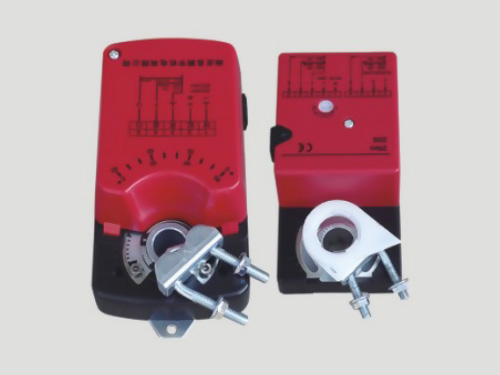Air valve mechanism
Air volume control valve actua
Air valve actuator
Remote controller for smoke ex
Air conditioning accessories
tuyere

Simulated damper actuator (analog mechanism)
The analog damper actuator (analog quantity mechanism) is an important industrial automation equipment. It controls the opening and closing degree of the damper by receiving analog signals (such as voltage or current signals), thereby realizing the precise adjustment of air flow and pressure. The following is a detailed analysis of the analog damper actuator (analog quantity mechanism):
I. Overview
The analog damper actuator is usually connected to the control system, receives analog signals (such as 0-10V, 4-20mA, etc.) from the controller, and controls the opening of the damper according to the strength of the signal. This actuator is widely used in occasions where precise control of air flow and pressure is required, such as air conditioning systems, ventilation systems, industrial production lines, etc.
II. Working principle
Signal reception: The analog damper actuator first receives analog signals from the control system. These signals can be voltage signals (such as 0-10V) or current signals (such as 4-20mA), representing the controller's expected value for the damper opening.
Signal processing: The circuit inside the actuator processes the received analog signal and converts it into a control signal that can be recognized by the motor or pneumatic device.
Driving device: The motor or pneumatic device generates power according to the control signal to drive the damper to open or close. The opening of the damper is proportional to the strength of the analog signal, that is, the stronger the signal, the larger the damper opening; the weaker the signal, the smaller the damper opening.
Feedback mechanism (some actuators have): Some advanced analog damper actuators also have a feedback mechanism that can monitor the actual opening of the damper in real time and feed back the information to the control system. In this way, the control system can fine-tune the actuator according to the feedback signal to ensure that the opening of the damper meets the requirements of precise control.
3. Advantages
Precise control: The analog damper actuator can receive analog signals for precise control, realize continuous adjustment of the damper opening, and meet the needs of precise control of air flow and pressure.
Good stability: Since analog signals are used for control, analog damper actuators are less subject to external interference during signal transmission and processing, so they have good stability.
Strong applicability: Analog damper actuators are suitable for a variety of control systems and control signal types, and can be flexibly applied to different industrial automation occasions.
IV. Application Scenarios
Analog damper actuators are widely used in the following occasions:
Air conditioning system: In the air conditioning system, the analog damper actuator is used to control the supply and return air volume to maintain the stability of indoor temperature, humidity and air quality.
Ventilation system: In the ventilation system of the building, the analog damper actuator is used to control the fresh air volume and exhaust air volume to ensure the circulation and renewal of indoor air.
Industrial production line: In the industrial production line, the analog damper actuator can be used to control the airflow distribution during heating, cooling and other processes to ensure the stability of the production process and product quality.
Working principle of the actuator of the air volume control valve
Electric air volume control valve, as an intelligent air duct equipment, is widely used in air conditioning systems in fields such as construction, medical care, and industry. It can automatically adjust the opening of the valve according to the air flow
2024-05-06
The execution content of the fire damper actuator
To drive the valve action, a matching actuator is required. The actuator used for fire dampers may not be electrically driven, but may also be electrically driven.
2024-05-06
The structural composition of the fire damper actuator
The fire damper actuator is a type of actuator used for fire dampers in ventilation and air conditioning system pipelines, which solves the problem of inaccurate adjustment of the opening angle of valve blades, thus unable to accurately control the ventil
2024-05-06
What functions can the actuator of the air volume control valve achieve?
The actuator of the air flow regulating valve is an automated equipment used to control the air flow valve in ventilation ducts. It can automatically adjust the opening of the air valve by receiving signals from the control system to achieve the goal of c
2024-05-06
